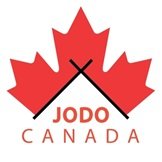Jodo is practiced at Ka Muso Kai Calgary.
Jodo is the name for the practice of a 'traditional' Japanese staff art. Its kanji is translated as "the way of the staff."
Our Lineage
An abridged lineage can be found in Kim Taylor (7D Iaido, 7D Jodo ZNKR) sensei’s article: A Brief History of ZNKR Jōdō.
History
Jodo's history is derived from the Shindo Muso-ryu practice of Shimizu Takaji (1876-1978).
Historians cite a duel between Miyamoto Musashi and Muso Gonnosuke Katsukichi as being pivotal to the development of Jodo.
Some sources say that Musashi successfully defended Muso's attack with a bo, while others cite a long bokuto.
Several lines developed and splintered off throughout the generations. These were finally united under one line by Shiriashi Hanjiro (1842-1927).
Learn more about the history of Jodo in Kim Taylor's article, "A Brief History of ZNKR Jodo."
Schools
Zen Nihon Kendō Renmei Jōdō
Ka Muso Kai practices Zen Nihon Kendo Renmei Jodo (ZNKR). In the 1960s, a research committee was struck to develop a seitei jo kata set.
These were approved in 1969. Seitei Jodo is comprised of 12 kihon and 12 kata.
We have had the privilege to work with several hachidan Jodo practictioners.
Organizations
Within Canada, the Canadian Kendo Federation governs the ranks and teaching of Jodo. However, many other organizations exist outside of Canada which perform similar governing tasks.
Applicants must be members in good standing of the Canadian Kendo Federation.
Our Lineage
The All Japan Kendo Federation defined the grading requirements for ZNKR Seitei Jodo in 1968. Dan ranks are awarded to Jodo practitioners who attend grading sessions and show a mastery of the skills and specific kihon and kata required for the attempted rank.
While all practitioners of Jodo have the opportunity to attend gradings and achieve official ranks, they are not necessary for practicing Jodo. Some of our members hold ranks in Jodo, while others just continue to practice without the pressure of grading.
Ranks & Grading
The All Japan Kendo Federation defined the grading requirements for ZNKR Seitei Jodo in 1968. Dan ranks are awarded to Jodo practitioners who attend grading sessions and show a mastery of the skills and specific kihon and kata required for the attempted rank.
While all practitioners of Jodo have the opportunity to attend gradings and achieve official ranks, they are not necessary for practicing Jodo. Some of our members hold ranks in Jodo, while others just continue to practice without the pressure of grading.
Jodo Clothing & Equipment
Jodo practitioners train with a jo and a bokuto (wooden training sword). The standard jo measures 1" in diameter and 50.25" inches long. The bokuto should have a leather tsuba. A plastic one would shatter upon impact with a jo.
The standard uniform consists of a gi, hakama and obi. Loose fitting exercise clothing is permissible for beginners.



